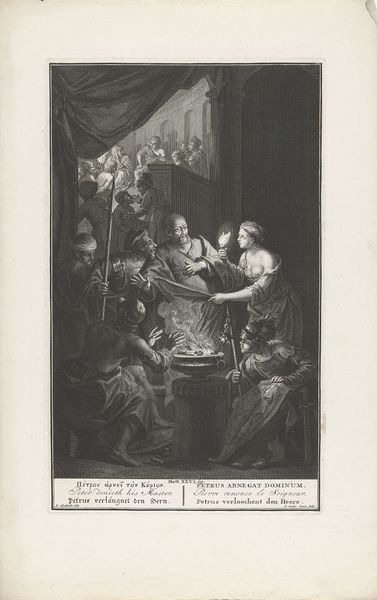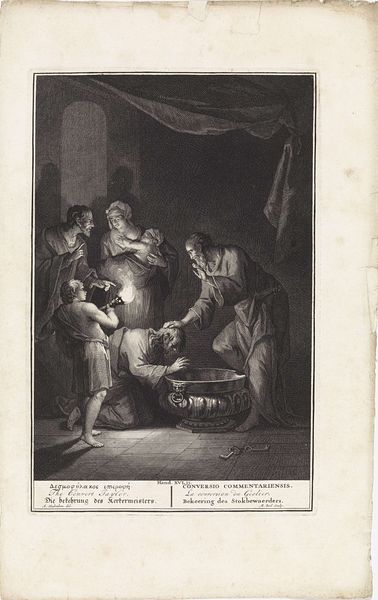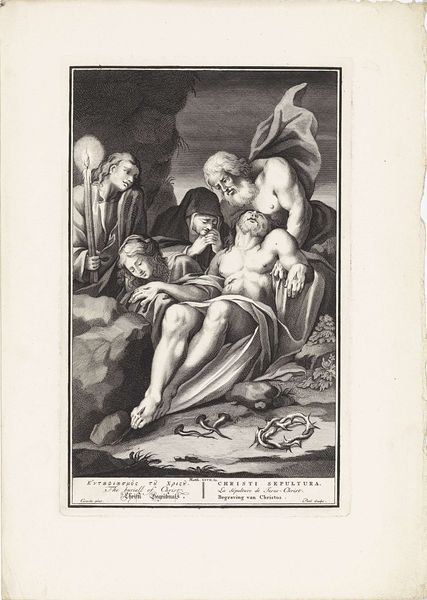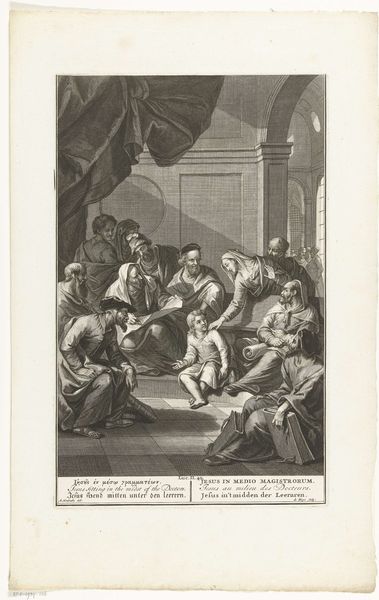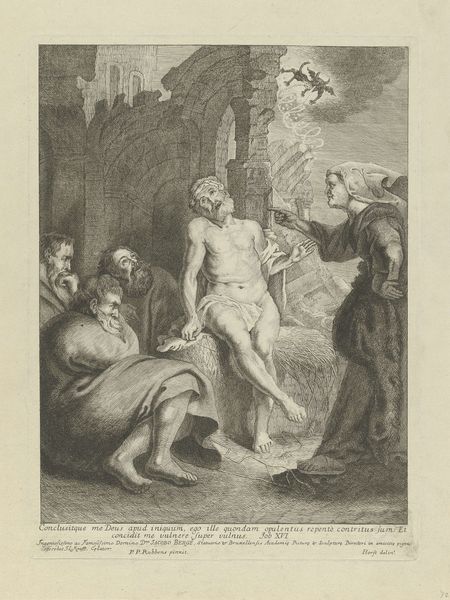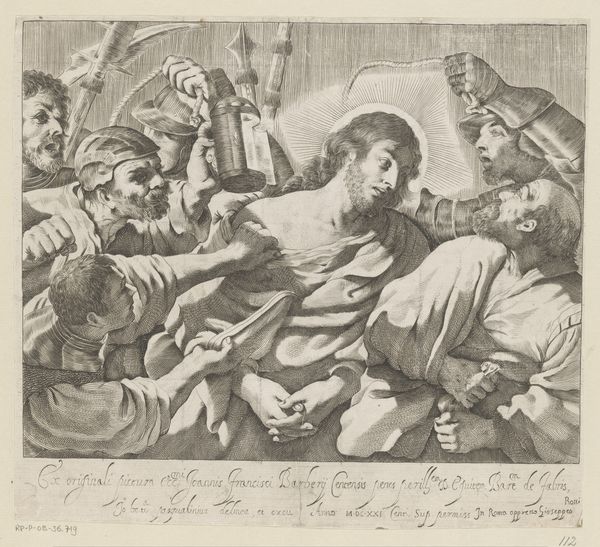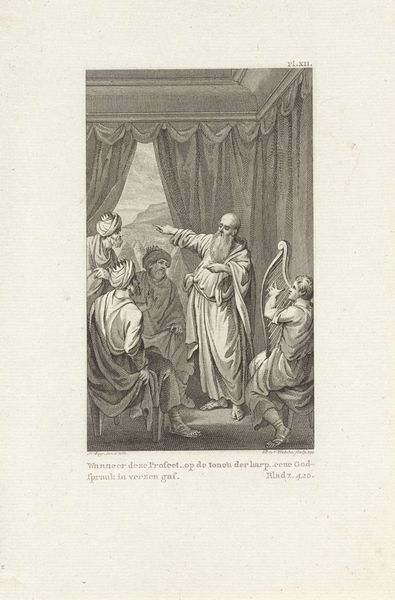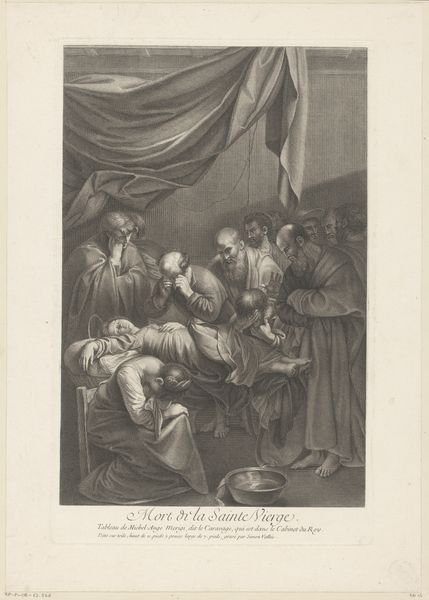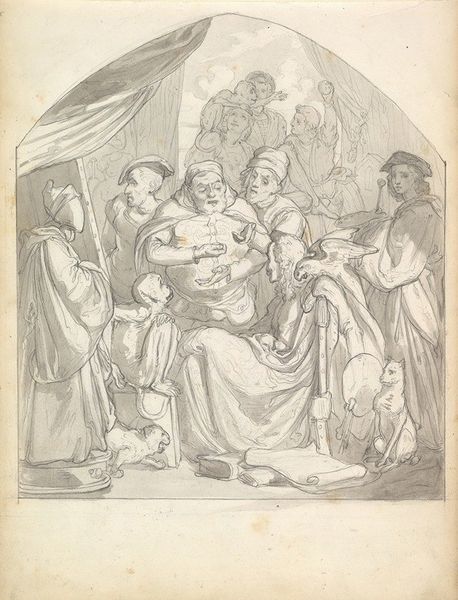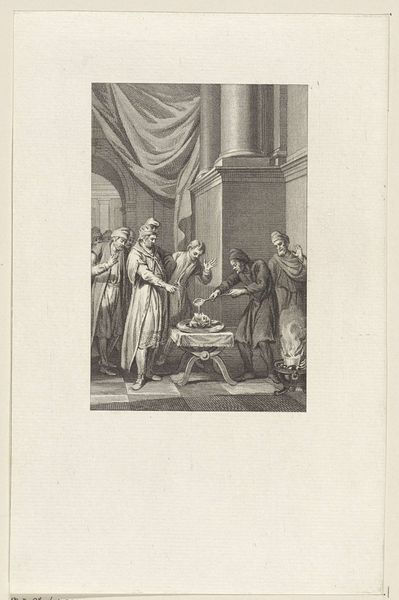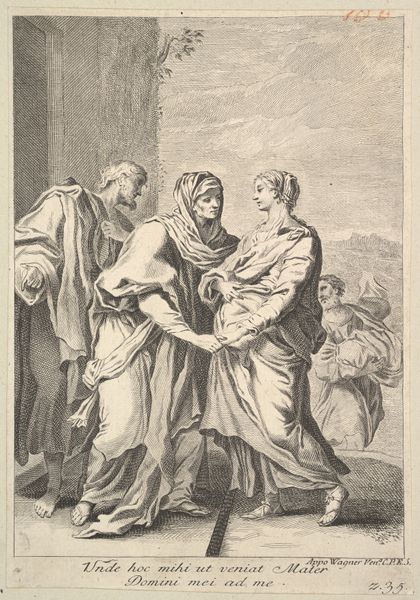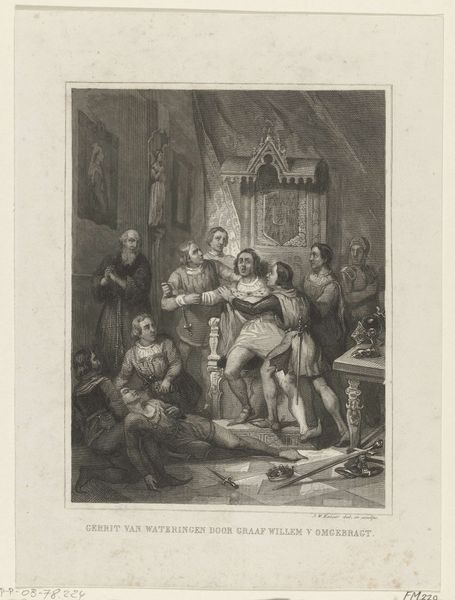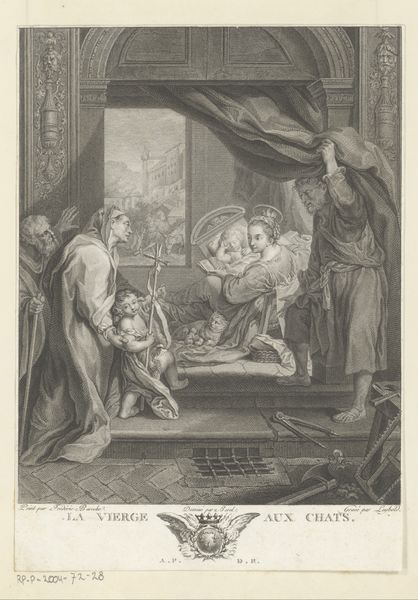
engraving
#
baroque
#
old engraving style
#
figuration
#
line
#
history-painting
#
engraving
Dimensions: height 355 mm, width 227 mm
Copyright: Rijks Museum: Open Domain
Curator: What strikes me first is the intimacy achieved with just line and shade, particularly when grappling with themes of faith and doubt. Editor: Absolutely, there's a potent drama here, achieved by stripping away color, isn’t there? I'm immediately drawn to the contrast – the raw physicality against the heavy symbolic weight of belief and disbelief. Curator: Here we see "The Incredulity of Thomas," also known as "Ongeloof van Tomas" as it’s called here at the Rijksmuseum. Created sometime between 1705 and 1728 by Matthijs Pool, this piece utilizes engraving to depict a key moment in Christian scripture. Editor: Engravings like these, intended for a wide distribution, speak volumes about the sociopolitical importance of disseminating religious narratives. What do you think about the role of the art object itself as a mechanism for social influence here? Curator: Precisely. This wasn’t just an artistic expression, it served to reinforce religious doctrine within the culture. Think about the social structures, and how such works influenced the role of religious institutions. The composition itself supports this, guiding the viewer's eye toward the central figure, to emphasize his sacrifice, but even moreso, the importance of accepting his return without seeing physical proof. Editor: And it's Thomas, right, “doubting Thomas” who gets this moment. It is an intimate scene: a tableau of male bodies clustered close, underscoring the stakes for a society structured around patriarchal faith and governance. The work forces you to face up to a challenge – isn’t there a kind of subversion in illustrating doubt itself? How did it challenge the cultural dominance of the church’s authority, or did it reinforce faith in the face of early modern rationalism? Curator: Doubt, yes, but consider also the Baroque sensibility present. It isn’t meant to condemn, but rather to guide. To allow room for the human condition in faith. To humanize religious figures made so much more visible during The Enlightenment! The tension between faith and reason during that time can be better understood because of these artifacts. Editor: I can't shake how effectively this simple medium can represent that era’s struggle between faith, scientific thinking and skepticism, while navigating early-modern identity through art, no less! It pushes you to think about doubt, belief, power, and resistance.
Comments
No comments
Be the first to comment and join the conversation on the ultimate creative platform.
